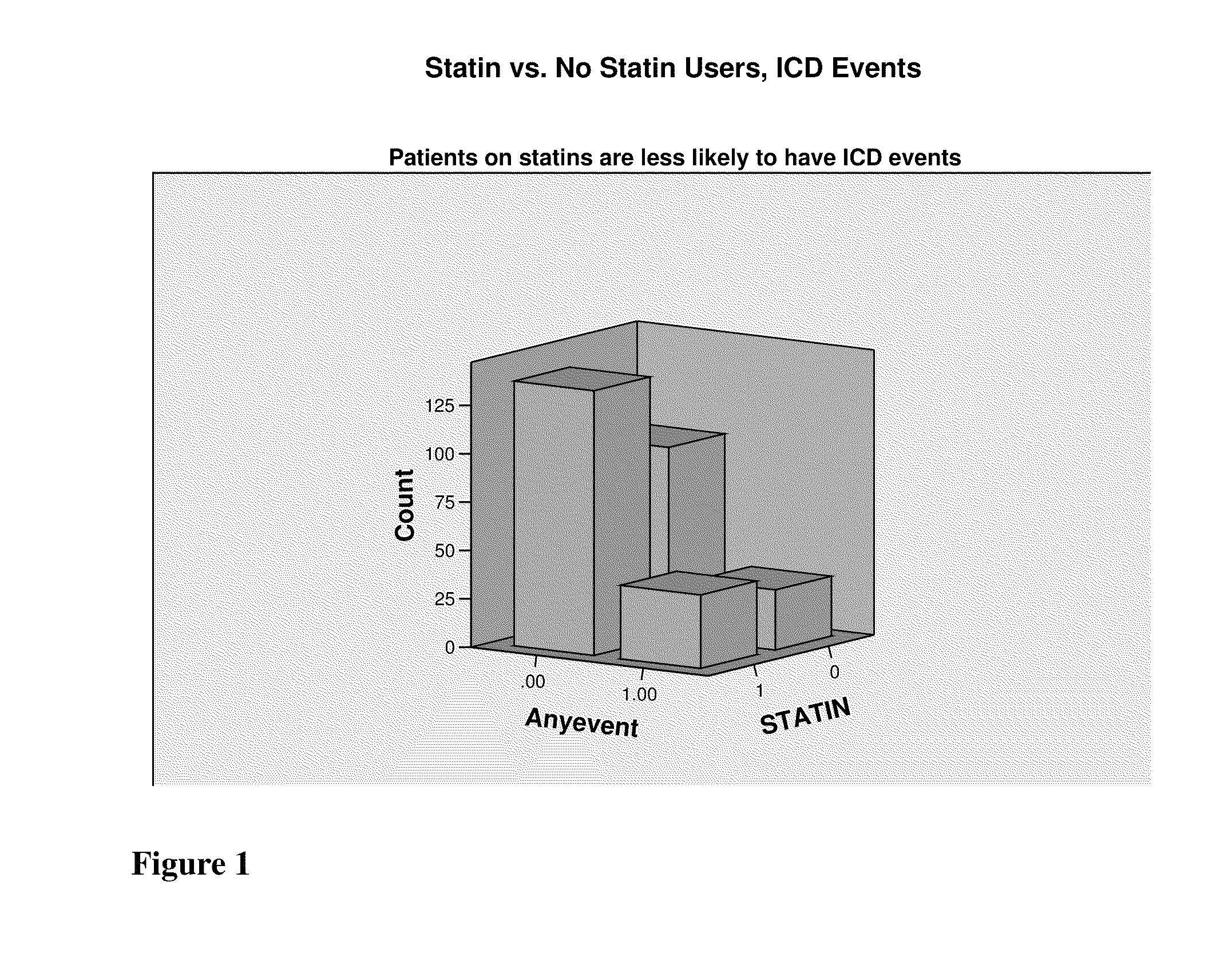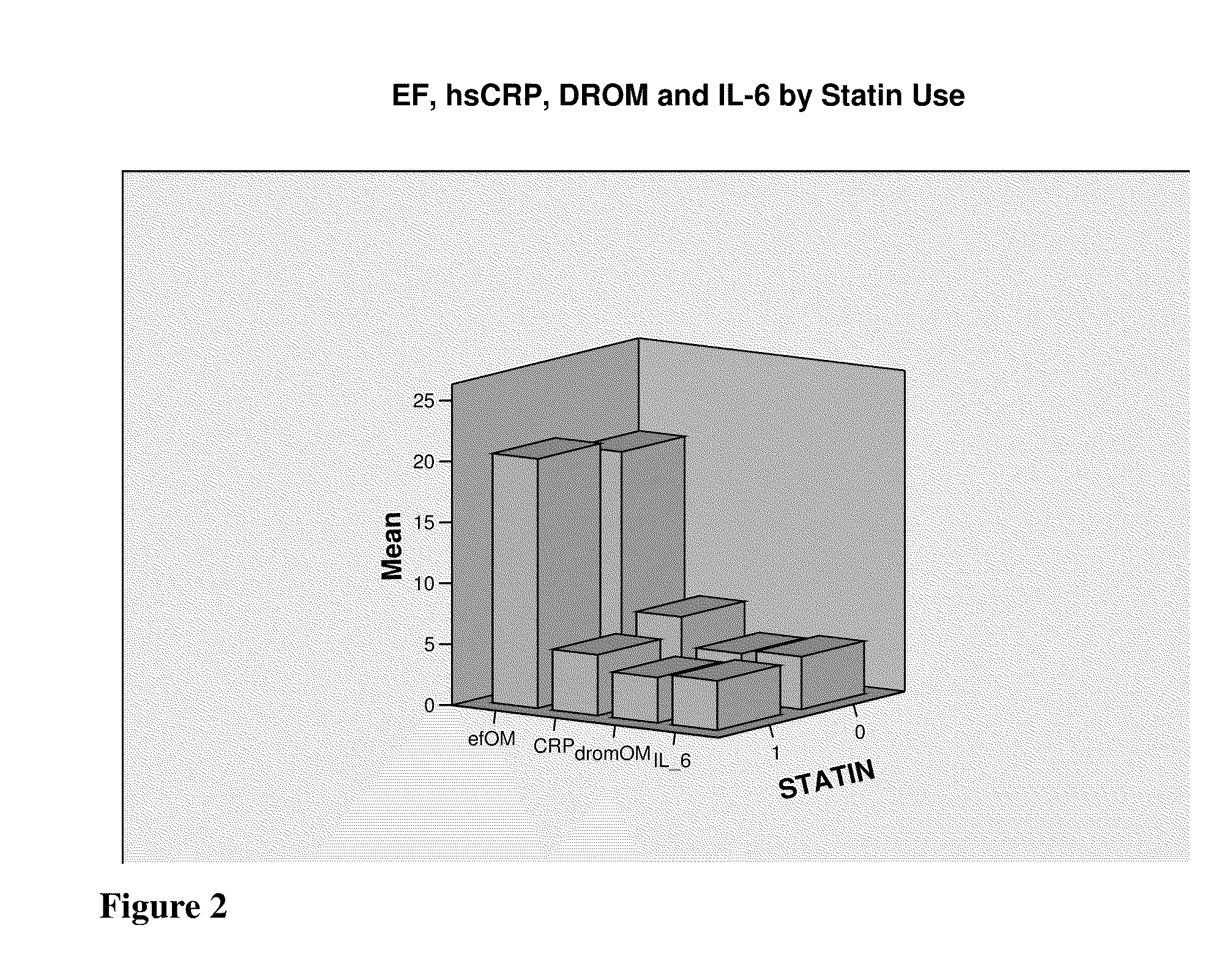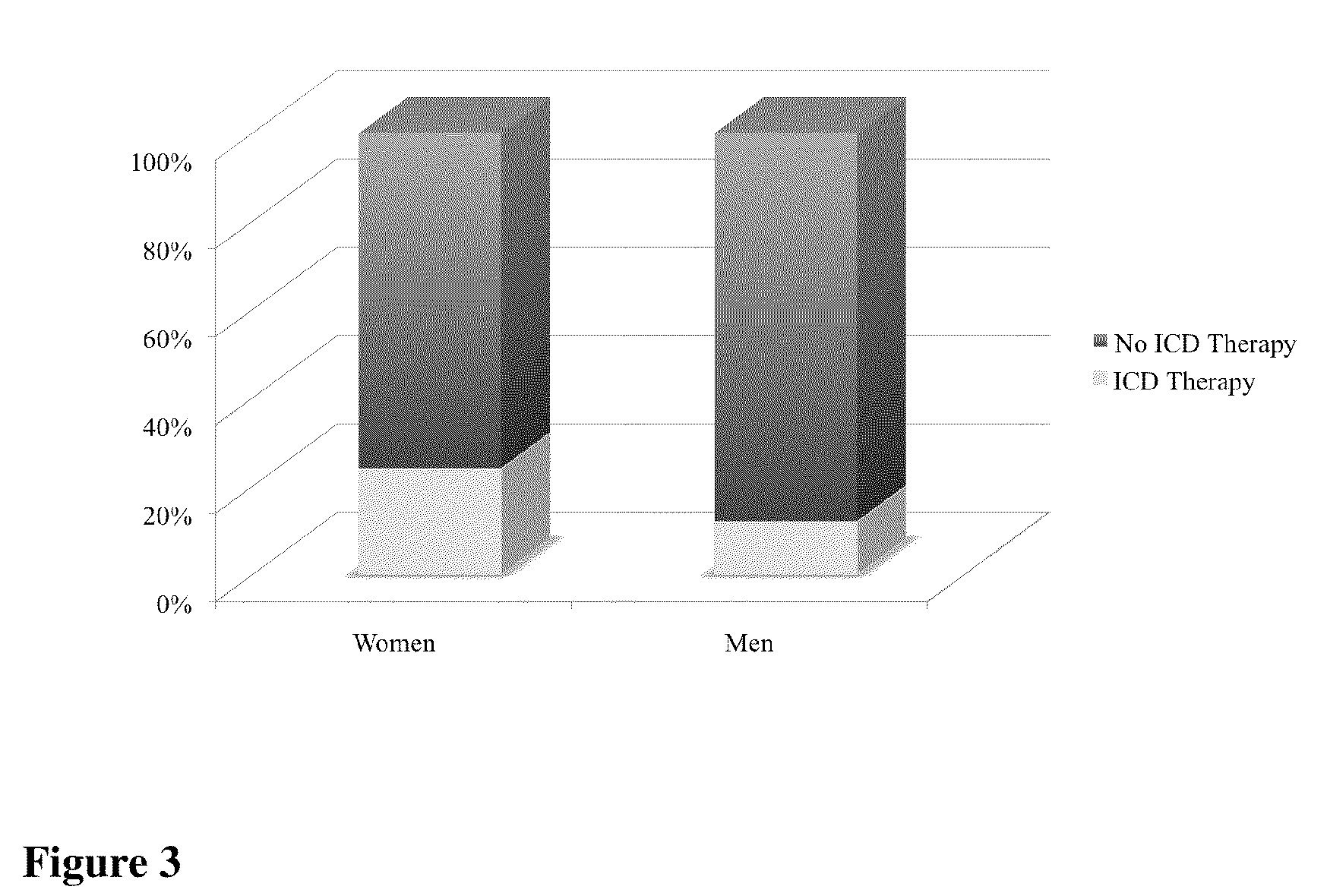Marker for arrhythmia risk
a risk and arrhythmia technology, applied in the field of arrhythmia risk markers, can solve the problems of abnormally high concentration of crp, elevated risk of ventricular arrhythmia, and high and achieve the effect of preventing or substantially reducing the risk of ventricular arrhythmia
- Summary
- Abstract
- Description
- Claims
- Application Information
AI Technical Summary
Benefits of technology
Problems solved by technology
Method used
Image
Examples
example 1
Methods
[0030]To select patients at high risk for ventricular arrhythmia, this retrospective study was performed by examining patients either undergoing ICD implantation or generator exchange. This study protocol was approved by the Emory University Internal Review Board. These patients were enrolled in the Genetic Risk Assessment for Defibrillator Events (GRADE) trial, and were undergoing new ICD implant or who had undergone ICD placement or generator exchange within the last 5 years were enrolled from the four Emory University Hospitals. Patients met the inclusion criteria of being age 18 or older, able to give informed consent and had depressed left ventricular ejection fraction (LVEF) <30%. Exclusion criteria included patient refusal, patients with a life expectancy less than 6 months, patients who had ongoing class IV heart failure symptoms, patients who were post-cardiac transplant or with left ventricular assist devices. Demographic and medical information obtained on enrollme...
example 2
Methods
[0046]We evaluated 243 patients with systolic heart failure (left ventricular ejection fraction (LVEF) ≦30%) and implantable cardioverter-defibrillators (ICDs) enrolled in the Genetic Risk Assessment of Defibrillator Events study. Demographic data, biomarker levels, and appropriate ICD shocks and anti-tachycardia pacing (ATP) for VT / VF were compared between African American (AA) and Caucasian patients. Table 4 shows the clinical characteristics of the patients. Blood was analyzed for derivatives of reactive oxygen metabolites (DROM), high sensitivity C-reactive protein (CRP), and interleukin-6 (IL-6).
TABLE 4African AmericanCaucasian25.1% (61)74.9% (182)Male gender72.1%(44)85.2%(155)NICM39.3%(24)18.7%(34) p Atrial fibrillation34.4%(21)39.0%(71)Diabetes36.1%(22)34.6%(63)Age (years)57.3 ± 12.864.2 ± 10.8 p = 0.01LVEF (%)19.8 ± 7.5 21.1 ± 6.2ACC / AHA HF Class2.11 ± 0.8 2.05 ± 0.7Creatinine (mg / dl)1.3 ± 0.4 1.4 ± 1.0Weight (lbs.)197.8 ± 45.1 198.6 ± 42.7Previous smoking52.5%(32)74....
example 3
Methods
[0049]Demographic data, biomarkers, and appropriate ICD shocks and anti-tachycardia pacing (ATP) were examined in 232 patients (LVEF ≦30%) with ICDs enrolled in the Genetic Risk Assessment of Defibrillator Events study. Table 6 shows the clinical and demographic data for the patients. Blood was analyzed for derivatives of reactive oxygen metabolites (DROM), high sensitivity C-reactive protein (CRP), and interleukin-6 (IL-6).
TABLE 6WomenMen19.8% (46)80.2% (186)p valueAge (years)57.7 ± 10.362.8 ± 12.10.009Caucasian54.3%(25)76.9%(143)0.003Hypertension71.7%(33)66.1%(123)0.599Ischemic37.0%(17)67.2%(125)cardiomyopathyLVEF (%)19.6 ± 6.9 20.0 ± 7.1 0.74Diabetes41.3%(19)33.9%(63)0.39ACC / AHA heart1.9 ± 0.72.1 ± 0.70.09failure classSmoking history39.1%(18)69.9%(130)
Results
[0050]Subjects were 20% (46) women and 80% (186) men. Mean follow-up time was 17 (range 3-48) months. LVEF did not significantly differ (19%±7% vs. 20%±7%, p=0.74) nor did incidence of diabetes, hypertension, or heart ...
PUM
| Property | Measurement | Unit |
|---|---|---|
| pH | aaaaa | aaaaa |
| follow-up time | aaaaa | aaaaa |
| concentration | aaaaa | aaaaa |
Abstract
Description
Claims
Application Information
 Login to View More
Login to View More - R&D
- Intellectual Property
- Life Sciences
- Materials
- Tech Scout
- Unparalleled Data Quality
- Higher Quality Content
- 60% Fewer Hallucinations
Browse by: Latest US Patents, China's latest patents, Technical Efficacy Thesaurus, Application Domain, Technology Topic, Popular Technical Reports.
© 2025 PatSnap. All rights reserved.Legal|Privacy policy|Modern Slavery Act Transparency Statement|Sitemap|About US| Contact US: help@patsnap.com



